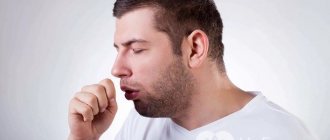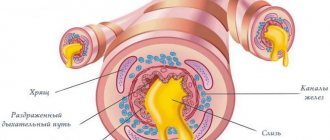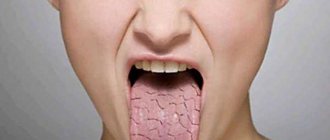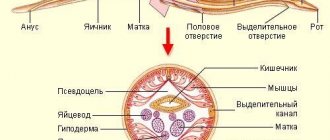Beneficial properties of milk for bronchitis
Bronchitis characterizes the inflammatory process occurring in the bronchial mucosa. The pathology develops as a result of infectious infection or irritating factors. Due to the developing inflammatory process, irritation of the walls of the bronchi occurs, a cough appears, which intensifies closer to the night.
Milk has the following positive qualities:
- softens the mucous tissues of the lungs and upper respiratory tract;
- warms up tissues;
- stimulates active hemodynamics in the respiratory organs, including the bronchi;
- promotes liquefaction and gentle removal of sputum;
- reduces the symptoms of the inflammatory process.
By eliminating the inflammatory process and liquefying sputum, the severity of dry cough decreases and becomes more effective. Also, the healing agent helps to resist congestion in the bronchi.
Breathing exercises
Special gymnastics involving breathing exercises is an effective auxiliary measure in the fight against the disease. With its help, you can help eliminate stagnation of sputum in the bronchi, restore mucous membranes that have lost full functionality, eliminate inflammation and sanitize pathogenic microflora.
Classes will be effective in one case - if the child begins to breathe correctly in the process: you need to inhale strongly and sharply, exhale more passively.
The complex is recommended to be performed several times a day. The course lasts 2-3 weeks . If bronchitis is in the acute stage, classes should start a few days after the start of antibacterial therapy. In its chronic course, it is worth paying attention to the respiratory muscles (drainage exercises will help, facilitating easy discharge of sputum).
Photo: Drainage exercises
Gymnastics intended for a child should resemble a fun game. First you need to take ten inhalations and exhalations through your nose and the same amount through your mouth, after which the following is shown:
1. The child needs to be seated in a chair. As he inhales, he should raise his arms up to the sides, and as he exhales, lower them with a loud exclamation of “Ka-a-r-r.”
2. Sitting on a chair and holding his hands near his shoulders, the child should lean towards the floor. You inhale, and as you exhale you should make a loud “Ga-a-a.”
3. Sitting on a chair, you need to place both hands on your waist. While inhaling, the body turns to the right side. The corresponding arm is also moved to the side and slightly back. As you exhale, you need to take the starting position and make “W-w-w-w.” The same exercise is performed in the other direction.
The presented exercises should be performed at least five times . At the end of the lesson, parents can allow the baby to “fly” around the room, vigorously flapping his arms like a bird. Then slow walking is necessary.
Gymnastics aimed at alleviating the condition of bronchitis should be performed with loud and clear sounds, which must be pronounced as you exhale . Each lesson lasts from five to ten minutes. The attending physician may recommend a more extensive course of exercises, taking into account the child's age.
Photo: Breathing exercises
Indications for use
Milk normalizes many processes and the functioning of organs in the body. It helps normal hematopoiesis, improves metabolism, and stabilizes the digestive tract.
After suffering from respiratory and influenza diseases, drinking milk is a prevention of bronchitis. Thanks to it, the body more actively resists various viruses and bacteria, thereby quickly restoring immunity after illness.
It is believed that the most beneficial is not just heat-treated milk, but fresh milk, more precisely obtained immediately after milking - fresh milk. However, you need to be sure of the health of the animal or check the health record.
This product is recommended for use in the most pathological conditions - pneumonia, tuberculosis, etc.
Features of the use of milk for bronchitis in children
Treatment and prevention of various diseases of the respiratory system in children is often recommended by doctors. However, it is worth remembering a few points about such therapy:
- Doctors do not recommend using cow's milk to treat children under three years of age, as it is difficult to digest and process by the baby's body. In addition, cow's milk is the most allergenic.
- Goat's milk can be used from one year onwards, but before using it it is better to dilute it with water - it is quite fatty.
- When using recipes, you need to be sure that the child does not have an allergic reaction to the components of the composition.
- Often the baby simply does not want to use the drug because of its specific taste. To improve this quality, it is recommended to add various sweeteners to the composition - honey, sugar, syrup, fruit, etc.
Traditional methods of treatment and prevention
One of the safest ways to combat illnesses in children is treatment with folk remedies. They can be used even if the baby has a fever. This poison is especially popular after colds and bronchitis: licorice root, plantain leaves, linden flowers, sage herb are mixed in equal proportions, and then crushed in a blender. After this, 4 tablespoons of the resulting product are poured into a glass of boiling water, infused for 20 minutes and consumed three times a day before meals, 1/3 cup.
If the baby has a normal body temperature, then you can also rub with animal fat - pork, badger, duck, goose. You need to melt 1 tablespoon of fat, and then rub it into the skin of the child’s back and chest with massage movements. After this, the baby needs to be wrapped in a blanket.
Despite the many methods for treating bronchitis and its consequences, the best way to ensure excellent health for your baby is prevention. To reduce the risk of colds and bronchitis in a child, it is necessary to carry out regular breathing exercises and cold douses. It is also recommended to actively engage in sports (for example, swimming), and, of course, adhere to the principles of balanced nutrition.
Efficacy of goat's milk for bronchitis
Goat's milk, unlike cow's milk, has higher fat content and is less allergenic. It is recommended for use as it helps speedy recovery from colds and other diseases of the respiratory system. This property is ensured by the vitamins A and C contained.
Goat's milk is very useful for bronchitis
It is better to heat the milk for use. In this state, it envelops the pharynx, larynx, and tonsils. This calms the irritated tissues of the bronchi and lungs. It also helps to liquefy and remove mucus.
You can add other components to your drink, including honey, which has many beneficial functions.
Goat's milk increases the body's defenses, improves immunity, and promotes the body's resistance to pathological bacteria.
JMedic.ru
Provoking factors include:
- viral infections;
- bacterial infections;
- hypothermia of the body;
- decreased child immunity.
The disease may be accompanied, after the body has recovered, by some symptoms that do not go away for a long time and worsen the child’s quality of life.
These symptoms include:
If the above symptoms after bronchitis in a child persist for more than 5–7 days, then treatment should be started immediately, since residual effects after bronchitis can lead to a number of complications.
- emphysema;
- pulmonary heart;
- pulmonary hypertension;
- bronchial asthma;
- obstructive bronchitis.
In order to avoid such dangerous complications in the future, a number of therapeutic and preventive measures are prescribed to restore the child’s body after suffering bronchitis, which prevent the development of complications of the disease.
Treatment of residual effects of the disease
Treatment of residual effects that occur after bronchitis in a child is carried out using methods of medication, physiotherapy and traditional treatment.
Drug therapy
If there is elevated body temperature, weakness, headache or body aches, non-steroidal anti-inflammatory drugs are prescribed for a course of treatment for 5 days.
Akamol-Teva, Aldolor, Panadol, Lupocet, Mexalen are released in the form of syrup and are therefore prescribed from the first months of a child’s life. Syrup dosage in a 100 ml bottle: 125 mg of active ingredient in 5 ml of syrup.
For newborns and children of the first year of life, medications are suitable that come in the form of rectal suppositories - Daleron, Cefekon, Efferalgan or a solution - Pamol, Tylenol, Febricet.
It is better to place suppositories with the drug after spontaneous bowel movement to be sure that the administered drug will act in full and immediately. Rectal suppositories are administered before the child goes to bed at night, or immediately after he falls asleep.
Suppositories are available in several dosages of the active substance - 0.05 g, 0.1 g and 0.25 g.
Table for calculating the dose of the drug for children:
Paracetamol in solution (drops) is a specially adapted form of the drug for children under 2 years of age. The drops can be given by dropper or added to breast milk, water, juice or other drink.
0.8 ml drops contain 80 mg of paracetamol. Drops are sold in a small bottle of 15 ml.
Table for calculating drug doses in children:
After reaching 2 years of age, the drug is not prescribed, since the dosage of the active substance is very small and even with an increase in the dose, the therapeutic effect cannot be achieved.
Ibuprofen is a medicinal substance that has a pronounced anti-inflammatory (selectively inhibits cyclooxygenase-2, which triggers an inflammatory reaction in the body, reduces the synthesis of inflammatory mediators - bradykinin, leukotrienes), anti-edematous (improves blood circulation in the area of inflammation, suppresses the migration of mast cells), analgesic and antipyretic (affects the centers of pain and temperature regulation in the brain) effect.
Advil, Brufen, Motrin, Nurofen are available in suspension or syrup and are prescribed to children from the first month of life, taking into account weight and age.
To treat residual effects of bronchitis, drugs are prescribed once a day in the morning or evening. Treatment lasts 5 days.
Capsules Bonifen, Burana, Ibuprom, Ibusan are available in tablets and capsules of 200 mg, prescribed to children over 12 years old at 200 - 400 mg once a day after meals.
If your body temperature rises sharply while taking this group of drugs, you should urgently seek medical help from a pediatrician.
Ambroxol is a universal remedy for combating dry and wet cough. The drug stimulates sputum discharge by acting on the ciliated layer of the ciliated epithelium of the bronchi, reduces the production of bronchial secretions by blocking goblet cells, lyses protein bonds in sputum, which reduces its viscosity and results in better coughing.
Also, this drug is the drug of choice for children of all age groups, as it is available in the form of an oral solution, an inhalation solution, syrup, chewable and regular tablets.
To treat the consequences of bronchitis, it is recommended that children under 2 years of age take the drug in drops, and after 2 years #8212; in inhalation.
Treatment is prescribed for 7–10 days.
Ambrobene, AmbroHEXAL, Ambrosan, Flavamed, Lazolvan, Deflegmin have the form of ambroxol in solution, which is suitable for both oral administration and inhalation.
Drops for oral administration are prescribed to children under 2 years of age, 1 ml 2 times a day. The drug can be taken separately, using a syringe dispenser, or added to any drink - breast milk, tea, water or juices.
To treat shortness of breath after bronchitis in a child, short-acting bronchodilators are prescribed in tablets, aerosols or in the form of inhalation through a nebulizer.
Short-acting beta-2 agonists - Salbutamol - has a bronchodilator effect. The drug activates adenylate cyclase in the smooth muscle cells of the bronchi, which helps eliminate spasms and normalizes air conduction.
Ventolin, Astalin are produced in metered aerosols, prescribed 1 breath at the time of an attack of shortness of breath.
Volmax, Aloprol are available in tablets of 2, 4 and 8 mg. Prescribed to children over 12 years of age, 1 tablet during shortness of breath or an attack of suffocation.












